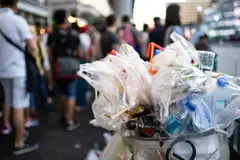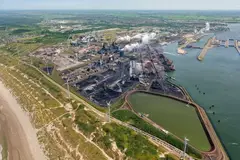Dutch government to invest €2B in Tata Steel production site
Key takeaways
- The Dutch government will invest €2 billion (US$2.4 billion) to support Tata Steel’s shift toward cleaner steel production at its IJmuiden facility, part of a €4–6.5 billion (US$4.7 and 7.7 billion) total investment.
- Plans include replacing coal-fired plants with gas-based technology, exploring carbon capture, and transitioning to biomethane and green hydrogen.
- The agreement targets health improvements for local residents by reducing lead emissions by 68%, nitrogen by 44%, and other harmful pollutants.
The government of the Netherlands, the province of North Holland, and Tata Steel have signed a letter of intent to improve the environmental sustainability of the steel giant’s IJmuiden facility by reducing CO2 emissions, reducing health risks, and addressing quality of life concerns for local residents.
As part of the agreement, the Dutch government will invest €2 billion (US$2.4 billion) in Tata Steel. Including investments from other sources, Tata Steel will receive a total of between €4 and €6.5 billion (US$4.7 and 7.7 billion).
Sophie Hermans, the Dutch Minister for Climate and Green Growth, says: “The signing of this declaration of intent is good news and a step in the right direction. Retaining major companies like steel manufacturer Tata Steel is crucial.”
“This way, the Netherlands can remain independent and become less dependent on foreign countries in this rapidly changing world. That’s why our tailored approach is crucial. Heavy industry that is sustainable and considerate of the environment has a future in the Netherlands.”
The letter is said to include commitments to achieve a binding agreement for the transition to greener, cleaner, and more circular steel production in the IJmond region.
Tata Steel aims to meet its commitments to replace one of its two coal-fired plants with “modern, cleaner plants” running on natural gas. Its plan also takes into consideration carbon capture and storage and replacing natural gas with biomethane or green hydrogen.
Ameliorating risks for locals
The upgrades to the Tata Steel plant in IJmond further aim to lower the emission of harmful substances, particulate matter, nitrogen, and noise pollution, in order to “significantly” reduce health risks and other nuisances for local residents.
Tata Steel says it will build windbreaks and several shelters near the raw material fields between 2027 and 2029 to reduce the primary source of health risks by close to 35%.
Furthermore, lead emissions should be reduced by 68% and nitrogen emissions by 44%.
Thierry Aartsen, the Dutch state secretary for Public Transport and Environment, adds: “With this signing, we are taking an important step toward a healthy, cleaner, and safe living environment for people living near Tata.”
“This brings us closer to concrete improvements in health and quality of life. I am pleased that with this step, we can offer them more clarity about a healthier and cleaner future for Tata Steel. We are reducing the health risks for local residents while the company can continue to produce steel responsibly in the IJmond region.”
The agreement is part of the Dutch government’s approach to supporting companies to make them more environmentally sustainable. In the months leading up to the agreement, the government and experts assessed the feasibility of Tata Steel’s plans. The government support will only be provided after a final customized agreement has been concluded.
A public consultation based on the letter will begin soon, and the responses will be incorporated into the final, binding, customized agreement in the coming period.











